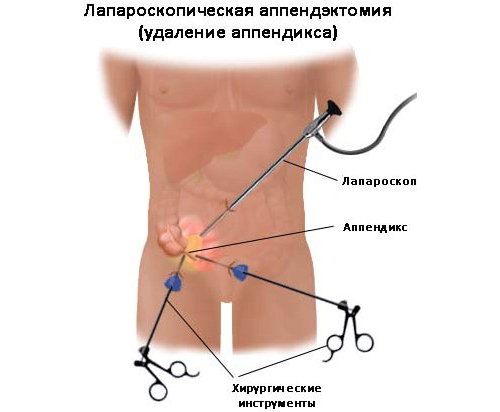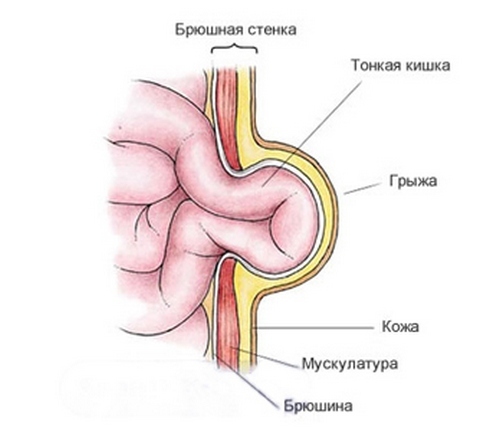Splenomegaly of the spleen: causes, symptoms and treatment
- Schistosomiasis - it is caused by blood-sucking organisms that penetrate the skin and affect the spleen, intestines, urogenital organs.The disease occurs in the Asian and Middle Eastern countries.
- Echinococcosis is a parasitic infection that is spread all over the world.The disease affects the work of all organs and systems, which is manifested by such signs as severe intoxication, sharp pains in the abdomen, chronic inflammation.
Autoimmune diseases as causes of splenomegaly:
- Rheumatoid arthritis is a common ailment that affects connective tissues and joint membranes.
- Red Lupus is a dangerous and common pathological process that causes a malfunction in the functioning of the immune system, it can affect internal organs, connective tissues and even the skin.
It is also worth noting that splenomegaly often occurs against such serious diseases as liver cirrhosis, malignant tumors, blockages of the vascular bed.Therefore, if the therapist has detected an increase in the spleen, it is necessary to undergo a complete examination of the body and find the true cause of splenomegaly.
Symptoms of splenomegaly
The clinical picture of the disease is ambiguous, because the symptoms differ in the form of the primary disease. However, this ailment has similar manifestations that allow one to suspect the pathology of the spleen.
The inflammatory form of is manifested by fever, intoxication, pain in the left area of the abdominal cavity, rarely vomiting, diarrhea.
Non-inflammatory form of is noted with a weak, pulling pain syndrome, the temperature is often within normal limits, the patient has no special complaints.
Note: , an inflamed spleen makes itself felt very rarely.Often, splenomegaly is asymptomatic and is diagnosed with a primary disease.
Uncomfortable sensations are nonspecific, they are often written off by patients for other pathological manifestations.And since the spleen is located next to the stomach, then increasing in size, it begins to press against the walls of the stomach, causing a sensation of heaviness and fullness.
Also, the general characteristics of inflammation include pale skin, bruises under the eyes, night sweats and weight loss.Occasionally, fever is observed, caused by hyperthermia of the body.
Diagnosis of splenomegaly
At the initial stage, the diagnosis of splenomegaly is performed by a therapist who probes the abdomen by palpation.Further, the specialist is going to have an anamnesis of the transferred diseases and the presence of chronic diseases is revealed.It is specified that the patient used to eat on the eve and visited the tropical countries.
For a more accurate diagnosis, a number of laboratory tests are assigned:
-
 General stool analysis.
General stool analysis. - Urinalysis, which will show the state of the genitourinary system.
- Biochemical analysis of blood from the vein, which can determine the pathology of the liver and pancreas.
- A general blood test for leukocytes, and hemoglobin.
- US of internal organs.
- Biological markers for the presence of autoimmune diseases.
- Computed tomography for more detailed study.
If these results are not sufficient for diagnosis, a sternal puncture may be prescribed, implying bone marrow sampling and its investigation for malignant lesions.After all the results are collected, the specialist prescribes medication, and in especially severe cases sends to the surgical removal of the spleen.
The spleen is the organ of the hematopoiesis, therefore, in the presence of splenomegaly, one can not do without a visit to the hematologist.In some cases, consultation of a rheumatologist, infectious disease specialist, endocrinologist may be necessary.
Treatment of splenomegaly of the spleen
The choice of method of treatment depends on how the primary disease was identified.
Note: itself enlarged spleen is treated only with the development of severe hypersplenism.Most often, the size of the body comes back to normal after eliminating the cause that caused splenomegaly.
Depending on the development of this or that underlying disease, the following therapeutic measures can be selected:
- If the cause of splenomegaly is bacterial infection, a course of antibiotics and probiotics is prescribed.
- In the case of helminth infection, anti-cestodial, antitrematus or antinematodose drugs are prescribed.
- If the spleen is enlarged by viral diseases, antiviral drug therapy with immunomodulators is recommended.
- In vitamin deficiency, a complex of multivitamins is prescribed and a balanced diet is prescribed.
To improve the patient's condition with splenomegaly, the following can be performed:
- treatment with hormonal preparations;
- transfusion of leukocyte and platelet count.
 If the conservative treatment does not give positive results, and the spleen continues to increase, despite the healing of the underlying cause of the pathology, the removal of the organ is prescribed.Thus, doctors try to save the life of the patient and avoid such serious complications as organ rupture, anemia, complications of primary pathologies.
If the conservative treatment does not give positive results, and the spleen continues to increase, despite the healing of the underlying cause of the pathology, the removal of the organ is prescribed.Thus, doctors try to save the life of the patient and avoid such serious complications as organ rupture, anemia, complications of primary pathologies.
After the removal of the spleen, human immunity weakens, resistance to numerous infections and viruses decreases.Therefore, the patient is given a course of antibiotics after the operation and is asked to undergo immunization against dangerous infections.
Prevention of splenomegaly
Preventive measures that help to avoid inflammation of the spleen and preserve the vital functions of the organ are simple and accessible.First of all, you need to give up harmful habits, work on strengthening the defenses of the body, conduct timely vaccinations, especially with frequent travel, and observe simple rules of hygiene.
Regular examinations of the body, treatment of chronic and acute illnesses, seeking medical help with anxiety symptoms, tempering, moderate physical exertion, walking outdoors will help to prevent severe development of the disease.
It should be noted that splenomegaly itself is not particularly dangerous.The primary disease, which affects not only the spleen, but also other organs, is of great danger.Therefore, with timely access for help and combined treatment, you can stop splenomegaly, and prevent complications.
Chumachenko Olga, medical reviewer



